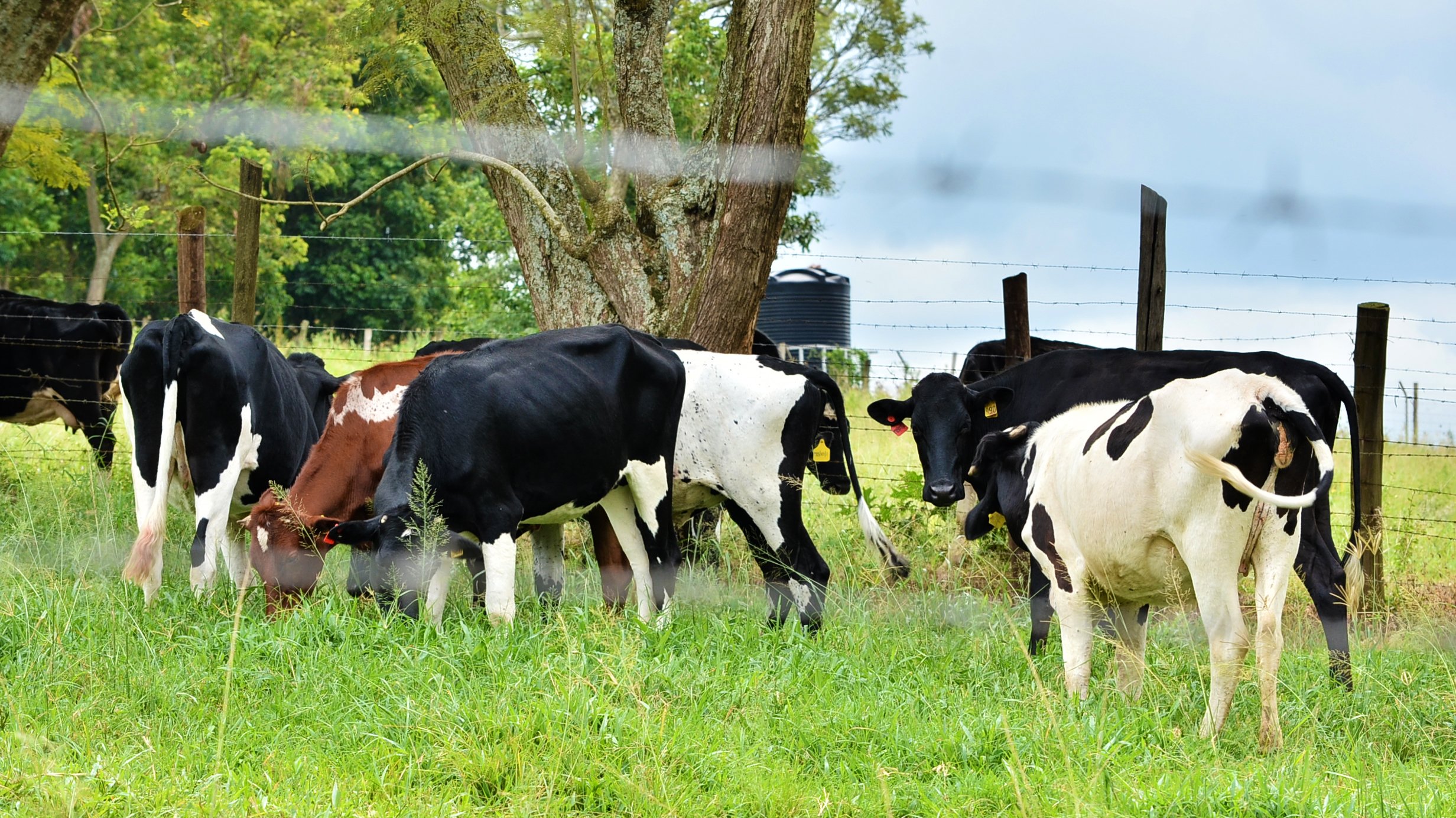Ugandan scientists develop anti-tick vaccine

Some of the exotic cows in confinement for the testing of the locally made anti-tick vaccine. The cows have not been sprayed with acaricides for more than six months. PHOTO/LOMINDA AFEDRARU
What you need to know:
- Experts contend that 80 percent of cattle globally are affected by tick-borne diseases and in Uganda the loss arising from this challenge is Shs3.8t annually.
The long cry of animal husbandry farmers across Uganda and the neighbouring countries will soon be no more.
This follows a breakthrough by scientists at the National Agricultural Research Organisation (Naro) in developing anti-tick vaccine. The vaccine is ready for commercialisation.
Scientists at the National Livestock Resources Research Institute (NaLIRRI) have been conducting research since 2016 in a bid to come up with a vaccine to save farmers from the burden of tick-bone diseases.
Background
Cattle keeping worldwide is a business to provide food, cash and manure as well as for industrialisation.
Experts contend that 80 percent of cattle globally are affected by tick-borne diseases and in Uganda the loss arising from this challenge is Shs3.8t annually.
There are a multitude tick species in the country and elsewhere in East Africa and this has caused farmers to spray their cattle twice a week instead of the recommended every after 14 days.
Anti-tick vaccines were first tested in 1937 in Australia and Cuba but in Uganda the development of the tick vaccine is the first of its kind.
It was in 1964 that the Government of Uganda launched the first ever large-scale compulsory tick control scheme in Kyaggwe, involving 44,000 cattle which were sprayed in 97 spraying centres.
This scheme was financed by Usaid and acaricide was free. The scheme was considered successful and the indigenous cattle population increased from 44,000 in 1964 to 55,000 1966. Exotic cattle increased from 750 in 1964 to 2,300 in 1967.
The control of ticks and tick-borne diseases has been sophisticated by mainly restricting cattle movement and use of acaricides which are applied on animals in dips, or as sprays and hand dressing.
However, these options have been unsuccessful, with many farmers complaining of an increase in tick-borne diseases such as East Coast fever and heart water that are affecting their cattle.

Farmers will be able to vacinate their livestock after the development of the anti-tick vacinne. The development was confirmed by Dr Halid Kirunda the director of MbaZARDI during the Seeds of Gold Farm Clinic on May 27 . PHOTO/LOMINDA AFEDRARU
Tick burden
The lead investigator of the anti- tick vaccine development, senior research officer at the National Agricultural Livestock Resources Research Institute (NaLIRRI), Dr Fredrick Kabi, explaining the status to a team of science journalists during a bio cafe meeting in Kampala, noted that that vaccines constitute an effective and sustainable alternative to controlling ticks.
He contends that ant-tick vaccines have no kick down effect compared to use of acaricides which gives quick results.
The vaccine takes a slow effect because once the animals are vaccinated, the ticks become weak and eventually die off thereby reducing the disease burden.
Dr Kabi explained that the targeted tick species include Rhipicephalus appendiculatus, R. decoloratus and Amblyomma variegatum, which are affecting most cattle breeds in the country.
He added that they have tested the vaccine at the institute and now they have been carrying field tests in five sites namely Mbarara Zonal Agricultural Development Research Institute with Zebu and Long Horn Ankole cattle species.
Other sites include Maruzi and Nabwin in Karamoja on short-horned East Africa Zebu, Kiruhura on Ankole cattle and in Isimba tests were done on the Boran cattle species.
Development process
Paul Kasaija, a PhD student, involved in developing the anti-tick vaccine explains that at the laboratory level the scientists’ study the different stages of tick growth namely egg, nymph and adult.
They identify molecules in the gene of the ticks and carry out gene silencing of the molecule which enables the ticks to transmit diseases and these are knocked out.
Once these molecules are removed from the ticks, the effect of disease transfer to the animals will be silenced. The genes which command the reproduction of the ticks once knocked out will also enable the ticks not to reproduce.
The entire laboratory process is through genetic modification of the tick genes. The purpose is to suppress reproduction of the ticks and the feeding behaviour of sucking blood from animals.
Once the genes are engineered, it is used to formulate the vaccine. This means once the animals are vaccinated, the anti-vaccine will cause immune response on the animals and when the tick comes to suck blood from the animal, the antibiotics will affect its feeding habit by weakening it.
Its reproduction is also affected in that once the female ones lay eggs, they will not hatch and this will control their population while some will end up dying after sucking blood from the vaccinated animal.
What happens at the trial site?
According to Dr Kabi, the animals are infested with ticks and the animals are injected with the vaccine. Gradually they ticks will become weak and animals keep healthy.
Trial site managers must ensure they keep records and so far 15 case of clinical tests have been done and the experimental cattle have sown improved body conditions and reduced tick burden.
Once released farmers are expected to carry out the vaccination consistently for three years to ensure resistance against the tick borne diseases.
The team gives a dose and after a month a booster dose is given which must protect the animal for six months.
At every trial site the team was able to recruit 140 animals and in December this year the vaccine will be available for farmer uptake.
Commercialisation process
He noted that the Subolesin (SUB) vaccine has shown 88 percent efficacy in the control of multiple tick species.
The team has developed about 5,000 doses of the vaccine, which will be released to farmers once the registration process is complete.
Dr Kabi said already infrastructure for mass production of the vaccine is in place at the institute awaiting official launch. The team is now on the registration process with the National Drug Authority (NDA) before commercial production commences.
Dr Kabi notes that the vaccine is of great importance to farmers because it will reduce the frequency of acaricide application thus saving profits and also enable cattle upgrades for higher productivity.
Farmers will greatly benefit from reduced disease incidences resulting from ticks and tick-borne diseases.
In addition, the use of the vaccine will lead to reduced environmental hazard, beef and milk contamination which occur due to the current excessive acaricide application.
Challenges
The diseases they transmit have continuously constrained Ugandan farmers from keeping improved livestock let alone improve their local cattle breeds for higher milk yields due to the high susceptibility to diseases.
There has been an increased use of chemical acaricides and antibiotics by farmers due to acaricide resistance and increased prevalence of tick-borne disease respectively.
The anti-tick vaccine will disable tick feeding on animals, its reproduction, disease transmission and its moulting behaviour to disable its growth. To curb this there is need for farmers to adopt the vaccine.
Once released farmers and veterinary doctors will administer it either through intramuscular injection or by swallowing it orally.
Tick-borne diseases
There are a number of tick-borne disease and they include, Babesiosis or tick fever which is a feverish disease of domestic and wild animals leading to anaemia and haemoglobinuria which can be fatal. This is transmitted by blue tick.
Bovine anaplasmosis, which is also transmitted by the blue tick, is an infectious, noncontagious haemotropic disease of cattle characterised in the acute form by fever, anaemia, weakness, constipation, yellowing of the mucous membranes, and lack of appetite, depression, dehydration, and laboured breathing.
Animals surviving an acute attack often make a slow recovery, resulting in losses in milk or meat production.




